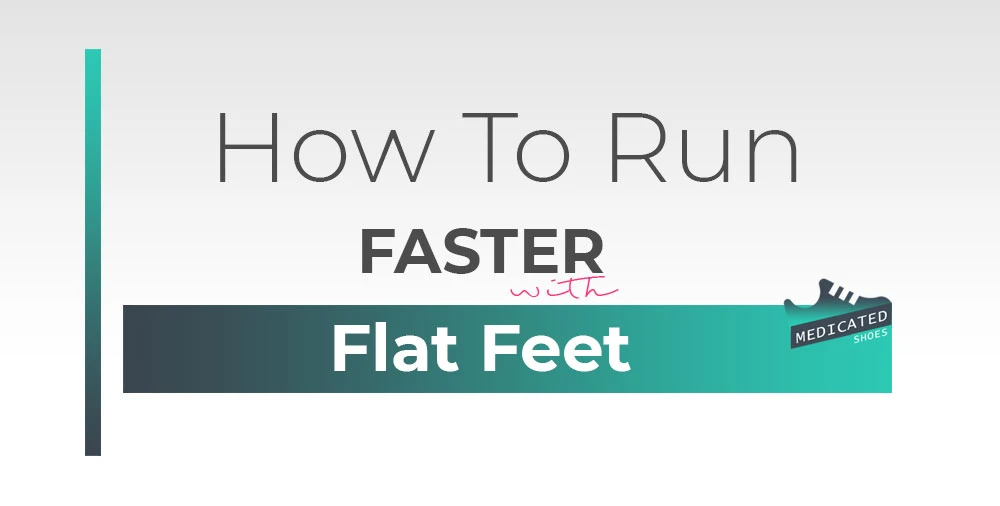If you have flat feet, you might think that running is not for you. You might have heard that flat feet can cause pain, injuries, and poor performance. But is that really true? And if so, what can you do to overcome these challenges and run faster with flat feet?
In this article, we will answer these questions and more. We will explain what flat feet are, how they affect your running, and what you can do to improve your speed and comfort. We will also share some tips and exercises that can help you strengthen your feet and prevent common problems. By the end of this article, you will have a better understanding of how to run faster with flat feet and enjoy the benefits of this amazing sport.
What are Flat Feet?
Flat feet, also known as pes planus or fallen arches, are a condition where the arches of your feet are flattened or collapsed. This means that your entire foot touches the ground when you stand or walk, instead of having a gap between your heel and the ball of your foot.
Flat feet are not a disease or a defect. They are simply a variation of the normal shape of the foot. Some people are born with flat feet, while others develop them over time due to factors such as aging, obesity, pregnancy, injury, or wearing unsupportive shoes.
Flat feet are very common, affecting about 20% to 30% of the population. They are more prevalent in certain ethnic groups, such as Asians and Native Americans. They are also more common in women than in men.
How Do Flat Feet Affect Your Running?
Flat feet can affect your running in several ways. Some of the most common effects are:
Reduced Shock Absorption
The arches of your feet act as natural shock absorbers when you run. They help to cushion the impact of each step and distribute it evenly across your foot. When you have flat feet, your arches do not provide this function, which means that more force is transferred to your ankles, knees, hips, and lower back. This can lead to pain, inflammation, and injuries in these areas.
Altered Biomechanics
The arches of your feet also help to stabilize your foot and ankle during running. They prevent excessive pronation (inward rolling) or supination (outward rolling) of your foot, which can cause misalignment and stress in your lower limbs. When you have flat feet, your foot tends to overpronate more than normal, which can cause problems such as plantar fasciitis, Achilles tendinitis, shin splints, knee pain, and hip pain.
Reduced Efficiency
The arches of your feet also help to propel you forward when you run. They store and release energy with each step, which helps to increase your speed and endurance. When you have flat feet, your arches do not provide this function, which means that you have to work harder to maintain the same pace and distance as someone with normal arches.
What Can You Do to Run Faster with Flat Feet?
The good news is that having flat feet does not mean that you cannot run fast or enjoy running. There are many things that you can do to improve your speed and comfort when running with flat feet. Some of the most effective strategies are:
Wear Supportive Shoes
One of the most important things that you can do to run faster with flat feet is to wear shoes that provide adequate support and cushioning for your feet. You should look for shoes that have a firm heel counter, a rigid midsole, and a flexible forefoot. You should also look for shoes that have a moderate amount of arch support, which can help prevent overpronation and reduce stress on your lower limbs. You should avoid shoes that are too soft, too flexible, or too minimalist, as they can worsen your condition and increase your risk of injury.
Use Orthotics or Insoles
Another option that you can try to run faster with flat feet is to use orthotics or insoles in your shoes. These are devices that are designed to correct or improve the function of your feet by providing additional support, cushioning, or alignment. You can either buy ready-made orthotics or insoles from a store or online, or you can get custom-made ones from a podiatrist or an orthopedist. Orthotics or insoles can help to reduce pain, improve stability, and enhance performance when running with flat feet.
Strengthen Your Feet
Another way that you can run faster with flat feet is to strengthen the muscles and tendons in your feet. This can help to improve the shape and function of your arches and reduce the strain on your lower limbs. Some of the best exercises that you can do to strengthen your feet are:
- Toe curls: Sit on a chair with your feet flat on the floor. Curl your toes as if you were trying to grab something with them. Hold for a few seconds, then relax. Repeat 10 times on each foot.
- Heel raises: Stand with your feet shoulder-width apart and your hands on your hips. Lift your heels off the floor as high as you can, then lower them slowly. Repeat 10 times on each foot.
- Arch lifts: Stand with your feet shoulder-width apart and your hands on your hips. Lift your arches off the floor as high as you can, then lower them slowly. Repeat 10 times on each foot.
- Towel scrunches: Place a towel on the floor and sit on a chair with your feet on the towel. Use your toes to scrunch the towel towards you, then spread it out again. Repeat 10 times on each foot.
Stretch Your Feet
Another thing that you can do to run faster with flat feet is to stretch the muscles and tendons in your feet. This can help to improve the flexibility and mobility of your arches and reduce the tension and tightness in your lower limbs. Some of the best stretches that you can do for your feet are:
- Toe stretch: Sit on a chair with your feet flat on the floor. Cross one leg over the other and grab your toes with your hand. Pull your toes back gently until you feel a stretch in the bottom of your foot. Hold for 15 seconds, then switch sides. Repeat 3 times on each foot.
- Heel stretch: Stand with one foot in front of the other and place your hands on a wall or a chair for support. Bend your front knee and keep your back leg straight. Push your back heel into the floor until you feel a stretch in your calf. Hold for 15 seconds, then switch sides. Repeat 3 times on each foot.
- Arch stretch: Stand with one foot in front of the other and place your hands on a wall or a chair for support. Bend both knees slightly and lean forward until you feel a stretch in the arch of your back foot. Hold for 15 seconds, then switch sides. Repeat 3 times on each foot.
Run with Proper Form
Another factor that can affect your speed and comfort when running with flat feet is your running form. You should aim to run with proper form, which means:
- Keeping your head up and looking ahead
- Relaxing your shoulders and arms
- Swinging your arms forward and backward, not across your body
- Keeping your elbows bent at 90 degrees
- Keeping your torso upright and slightly leaning forward
- Landing on your midfoot or forefoot, not on your heel
- Rolling from heel to toe smoothly
- Taking short and quick steps, not long and slow ones
- Breathing deeply and rhythmically
Running with proper form can help to improve your efficiency, reduce fatigue, and prevent injuries when running with flat feet.
Conclusion
Running with flat feet is not impossible or undesirable. You can run faster with flat feet by following some simple tips and strategies that can help to improve the function and comfort of your feet. You can also enjoy the many benefits of running, such as improved cardiovascular health, mental well-being, weight management, and overall fitness.
Remember to consult with your doctor before starting any new exercise program, especially if you have any medical conditions or injuries that may affect your running. Also, listen to your body and stop or modify your activity if you experience any pain or discomfort.
We hope that this article has given you some useful information and inspiration on how to run faster with flat feet. Happy running!

